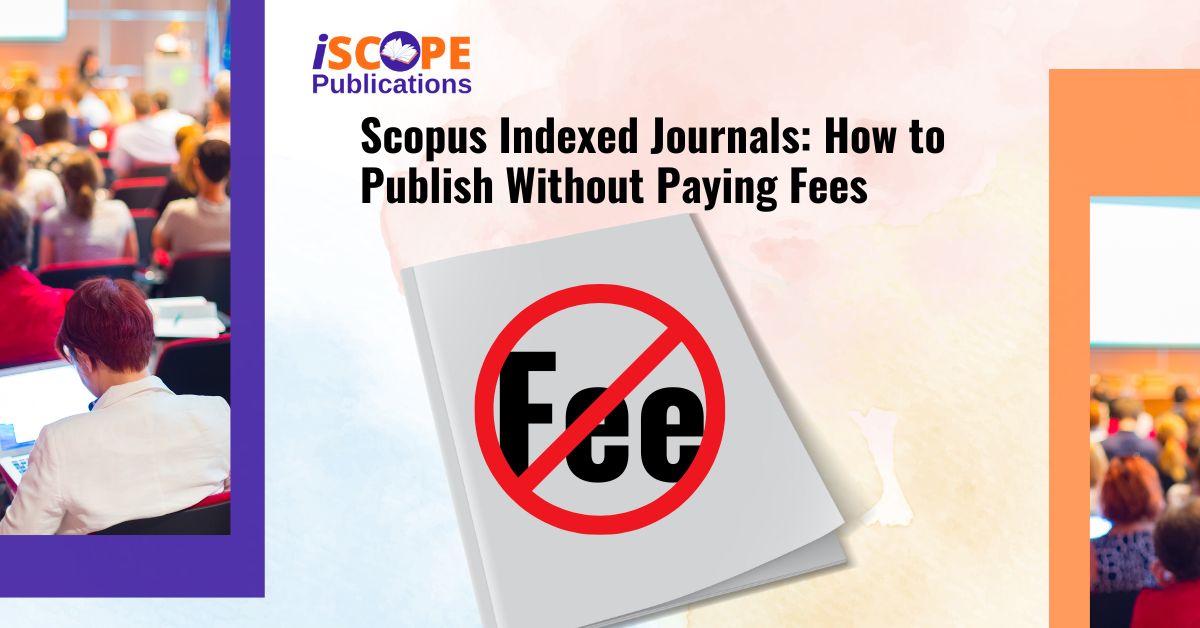World of academic publishing, choosing the right journal can make all the difference in how far your research reaches and how much impact it creates. Researcher selecting the right platform determines not only your paper’s visibility but also its credibility and academic value.
Two of the most discussed publishing options today are Open Access (OA) and Indexed Journals. Open Access journals make research freely available to readers worldwide, ensuring unrestricted knowledge sharing and wider reach.
What is Open Access Journals?
Open Access (OA) Journals are scholarly publications that make research freely available online to anyone, without subscription or paywall restrictions. Financial and accessibility barriers, allowing readers worldwide students, professionals, and researchers to read, download, and share articles freely. Open Access publishing is to promote transparency, inclusivity, and faster dissemination of scientific knowledge.
Types of Open Access
1. Gold Open Access:
Articles are made freely available immediately upon publication on the journal’s website. Authors often pay an Article Processing Charge (APC) to cover publication costs.
2.Green Open Access:
Authors can archive a version of their paper (preprint or postprint) in an institutional or subject repository, making it accessible without paying publication fees.
4.Hybrid Open Access:
Traditional subscription-based journals offer authors the option to make individual articles Open Access by paying an APC, while other content remains behind a paywall.
Key Benefits
- Wider Readership and Accessibility: Research reaches a global audience without cost restrictions, promoting higher engagement and knowledge sharing.
- Faster Publication Times: Many OA journals have quicker review and publication processes compared to traditional models.
- Increased Citation Potential: Freely available articles are often read and cited more, boosting the author’s academic visibility and impact.
Common Concerns
- Article Processing Charges (APCs): While readers access articles for free, authors may face high publication fees, which can be challenging for early-career researchers or those without funding support.
- Predatory Journals: Some publishers exploit the Open Access model by charging fees without providing legitimate peer review or editorial standards. To avoid such journals, authors should verify legitimacy through recognized directories like the DOAJ (Directory of Open Access Journals) or check publisher reputation before submission.
Understanding Indexed Journals!
Indexed Journals are scholarly publications that are included in recognized academic databases or indexing services. Journal is indexed, it means that its articles have been evaluated and approved based on specific quality criteria such as editorial standards, peer-review processes, and research integrity. Being indexed increases a journal’s discoverability, credibility, and overall academic reputation.
Major Indexing Databases
Some of the most respected and widely recognized indexing platforms include:
- Scopus – One of the largest abstract and citation databases covering diverse disciplines.
- Web of Science (WoS) – A trusted source for high-impact and multidisciplinary research.
- PubMed – Specialized in biomedical and life sciences publications.
- DOAJ (Directory of Open Access Journals) – Focused on legitimate Open Access journals that meet quality publishing standards.
Advantages
- Academic Credibility and Reputation: Indexed journals are recognized for their rigorous peer-review process and high publication standards, which enhance an author’s academic standing.
- Peer-Review Standards and Quality Assurance: Journal follow transparent and structured evaluation systems, ensuring published research is original, valid, and relevant.
- Recognition in Academic Institutions and Funding Bodies: Many universities, research organizations, and funding agencies prefer or even require publications in indexed journals for promotions, grants, or academic recognition.
Limitations
- Restricted Access (Paywalls): Many indexed journals operate under subscription-based models, limiting access to institutions or readers who can afford to pay.
- Limited Reach Among General Audiences: Since indexed journals primarily cater to the academic community, their readership may be restricted compared to Open Access platforms that target broader, global audiences.
Top 10 Open Access Journals Every Researcher Should …
Key Differences Between Open Access and Indexed Journals!
Understanding the differences between Open Access (OA) and Indexed Journals is essential for researchers when deciding where to publish. Both aim to disseminate quality research, they differ in terms of accessibility, cost, audience, and impact. Table below highlights the main distinctions between the two publishing models:
| Criteria | Open Access Journals | Indexed Journals |
| Accessibility | Freely available to all readers without subscription barriers | Often available only through paid subscriptions or institutional access |
| Cost | May require authors to pay Article Processing Charges (APCs) | Usually free for authors; costs are covered by subscriptions or institutions |
| Visibility | High global reach and accessibility for all readers | Highly recognized and valued in academic and research communities |
| Review Process | Varies by publisher; quality depends on editorial standards | Strict and structured peer-review process ensuring academic rigor |
| Impact | Depends on citations, online visibility, and readership | Depends on journal’s indexing status, impact factor, and ranking |
How to Identify Reliable Journals?
Academic publishing landscape, distinguishing reliable journals from predatory ones is vital to maintaining your research credibility and professional integrity. Reliable journal provides transparency, follows strict ethical standards, and ensures that your work undergoes a legitimate peer-review process before publication.
Best Practices for Academic Publishing!
Publishing in reputable journals requires careful planning, attention to detail, and adherence to professional standards. Following best practices not only increases your chances of acceptance but also enhances your research’s overall visibility and credibility.
Start by reading recent issues of your target journal to understand its content quality, writing style, and the type of studies it prioritizes. This helps you gauge whether your manuscript aligns with the journal’s expectations and academic rigor.
Open Access and Indexed Journals is a critical decision that shapes your research’s visibility, credibility, and long-term impact. Open Access journals offer unrestricted global reach and faster dissemination, making your findings accessible to a wider audience. Indexed journals, on the other hand, ensure academic recognition, rigorous peer review, and institutional credibility through established databases like Scopus or Web of Science.
FAQs
1.What’s the main difference between Open Access and Indexed Journals?
Open Access journals make research freely available to everyone, removing paywalls and subscription barriers. Indexed journals, on the other hand, are recognized in trusted databases like Scopus or Web of Science, ensuring academic credibility and quality. Some journals can be both Open Access and Indexed, combining accessibility with scholarly recognition.
2.Can a journal be both Open Access and Indexed?
Yes. Many reputable journals today are both Open Access and Indexed in major databases such as DOAJ, Scopus, or Web of Science. This means they offer free access to readers while maintaining high editorial and peer-review standards.
3. How do I know if a journal is predatory?
Predatory journals often promise fast publication, lack transparent peer review, and charge high fees without clear policies. To verify legitimacy, check whether the journal is listed in trusted databases like Scopus, DOAJ, or PubMed. You can also refer to resources like Beall’s List or Cabell’s Journal Whitelist/Blacklist.
4. Are Open Access journals better for citation rates?
Generally, yes. Open Access articles are more widely read and shared, which can lead to higher citation counts. Citation impact also depends on the quality of research, visibility of the journal, and the relevance of the study topic.
5. What are the best databases to check journal indexing?
Some of the most reputable indexing databases include Scopus, Web of Science, PubMed, and the Directory of Open Access Journals (DOAJ). Checking a journal’s listing in databases ensures its authenticity and academic value.
6. Do universities prefer indexed journals for promotions?
Most academic institutions and funding bodies prioritize publications in indexed journals, as they indicate quality, credibility, and verified peer-review standards. Indexed publications often carry more weight for academic promotions and research assessments.
7. How do APCs work in Open Access publishing?
Article Processing Charges (APCs) are fees paid by authors (or their institutions/funders) to cover the costs of publishing in Open Access journals. Fees support peer review, editing, and online hosting, allowing readers to access the content freely.
8. Is publishing in Scopus-indexed journals mandatory for PhD scholars?
Universities, especially in Asia and Europe, publishing in Scopus-indexed or other recognized journals is recommended or mandatory for PhD submission and career advancement.
9. Are all Open Access journals peer-reviewed?
No, not all. While many reputable Open Access journals follow strict peer-review processes, some predatory ones do not. Always verify the journal’s editorial policies and peer-review details before submitting your work.
10. How to verify if my paper will be visible in global databases?
After acceptance, check if the journal lists its indexing platforms (like Scopus, Web of Science, or DOAJ) on its website. Once published, you can confirm visibility by searching your paper title or DOI in those databases directly.



